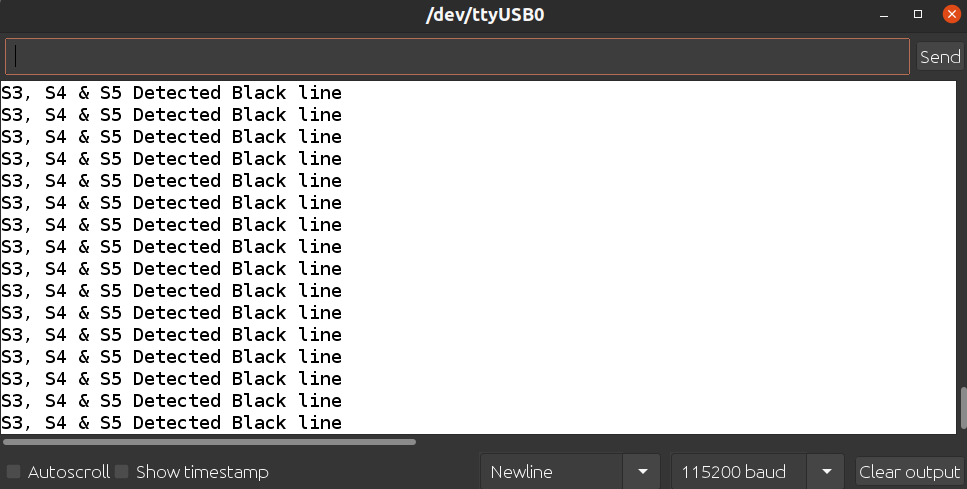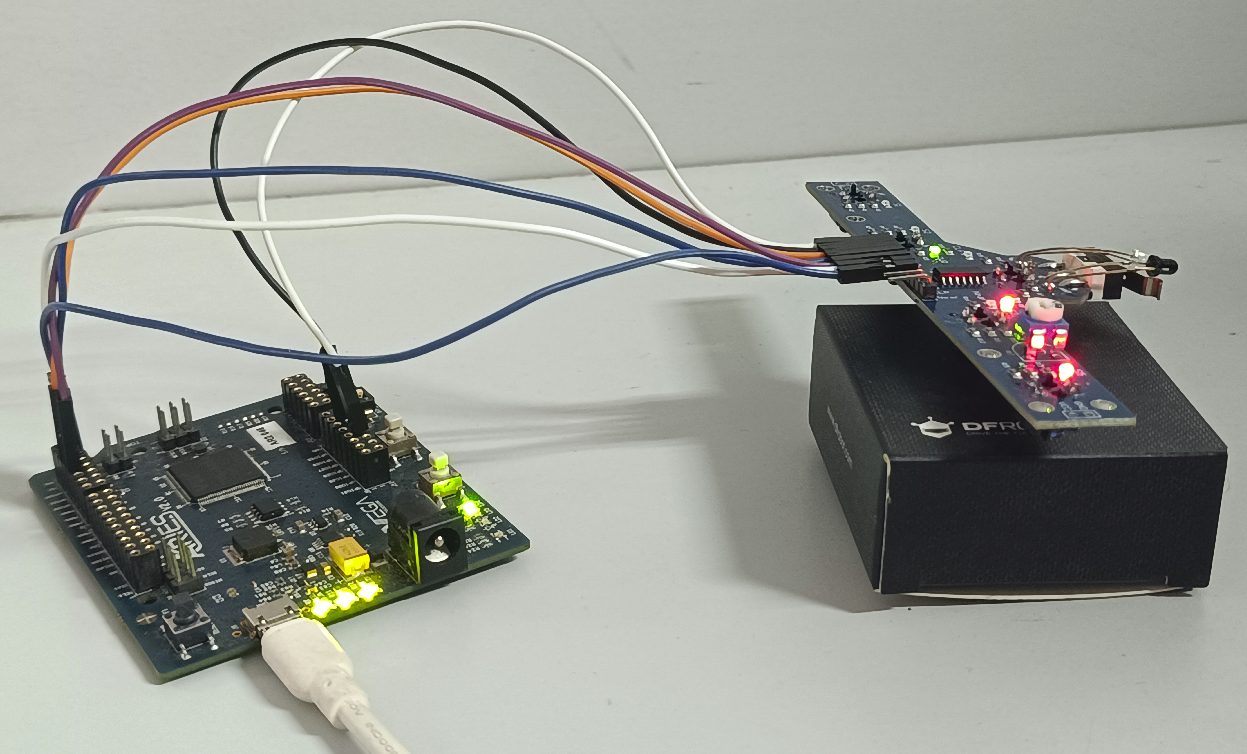In this tutorial, we will see how we can interface a Xcluma BFD-1000 5 channel Tracking Sensor with ARIES V2 board. This tracking sensor is mainly used with line follower robots for complex black and white line tracking.
Specifications
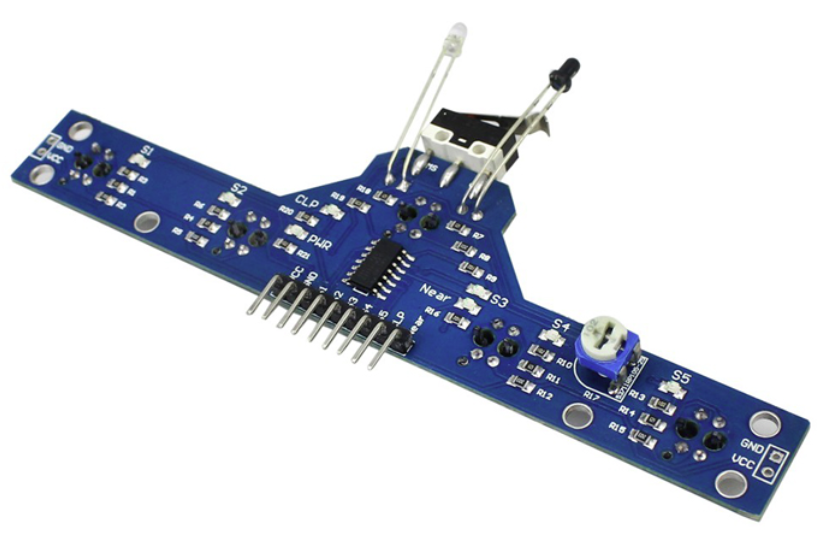
| Input voltage | 3.0-5.5V |
| Output Type | Digital output (high and low) |
| Detecting distance | 0-4cm (black line sensor) 0-5cm (adjustable distance detection) |
Circuit Diagram
The BFD-1000 5 channel tracking sensor has nine pins: VCC, GND,CLP,Near and S1-S5. Connect VCC and GND of tracking sensor module to 3.3V and GND respectively of ARIES v2 board. Then connect the S1 to S5 pin of the tracking sensor to the GPIO-0 to GPIO-4 pin of ARIES v2 board for getting the digital output.
| BFD-1000 Sensor | ARIES V2 board |
| VCC | 3.3V |
| GND | GND |
| S1 | GPIO-0 |
| S2 | GPIO-1 |
| S3 | GPIO-2 |
| S4 | GPIO-3 |
| S5 | GPIO-4 |
Components Required
- ARIES v2 Microcontroller
- BFD-1000 5 channel tracking sensor
- Jumper wires
Note: All of the following boards can be used for this project
Connection Diagram
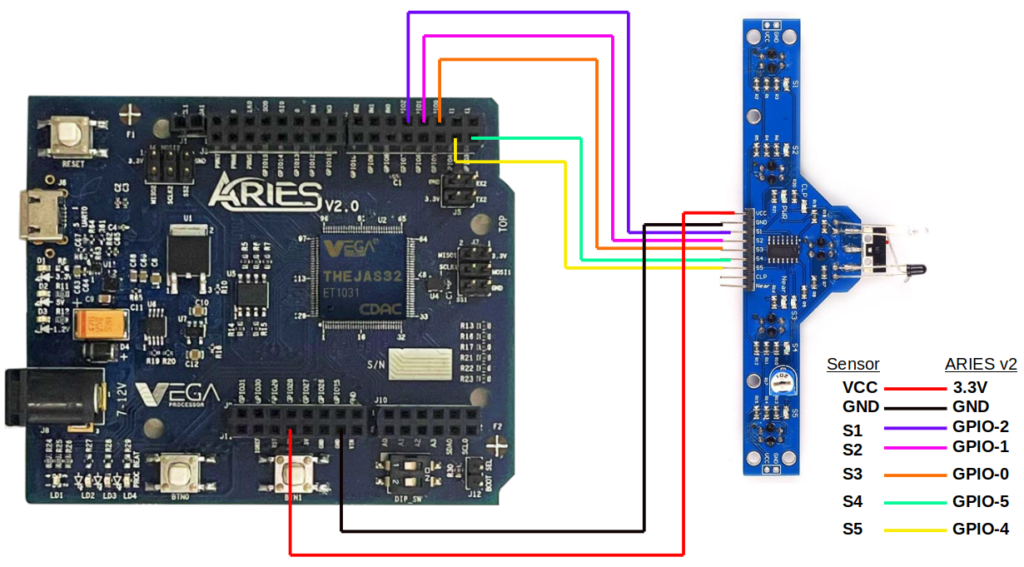
Now, for powering up the ARIES v2 board via the USB port of a Laptop/Desktop/PC and burning the code into the ARIES v2 board, we have to use a micro USB type B to USB type A cable. The cable should be connected to UART-0 port of the ARIES v2 board, and the Laptop/Desktop/PC should be preinstalled with Arduino IDE and VEGA ARIES boards of latest version.
Procedure
Open Arduino IDE
Go to Tools -> Board -> VEGA Processor ARIES Boards -> Select ARIES v2
Go to Tools -> Programmer -> Select VEGA XMODEM
Connect the ARIES v2 board to PC
Go to Tools -> Port -> Select the appropriate port
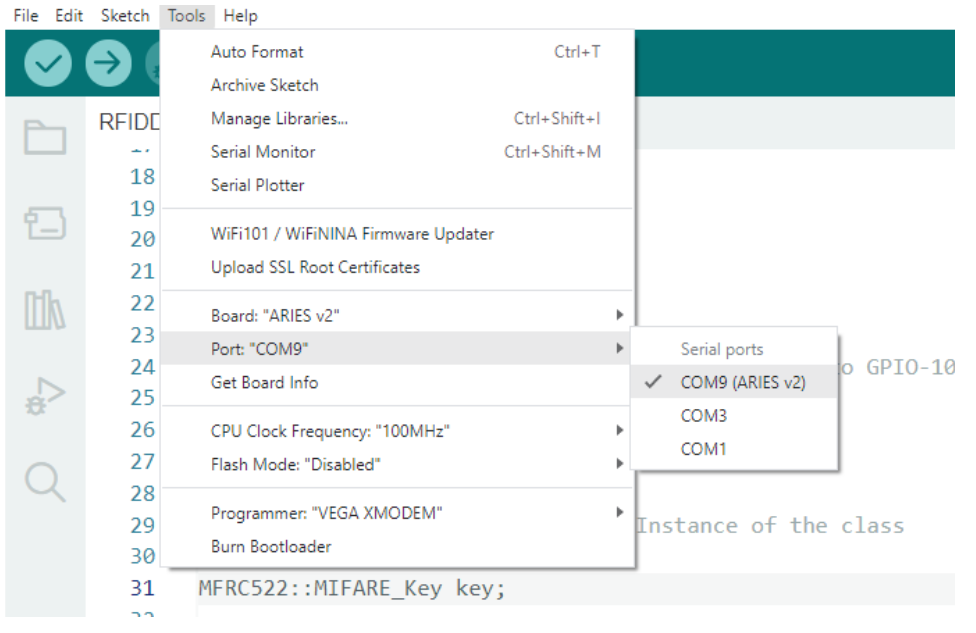
Open File -> Examples -> Examples for ARIES v2 ->GPIO -> Open BFD1000_Tracking_Sensor example
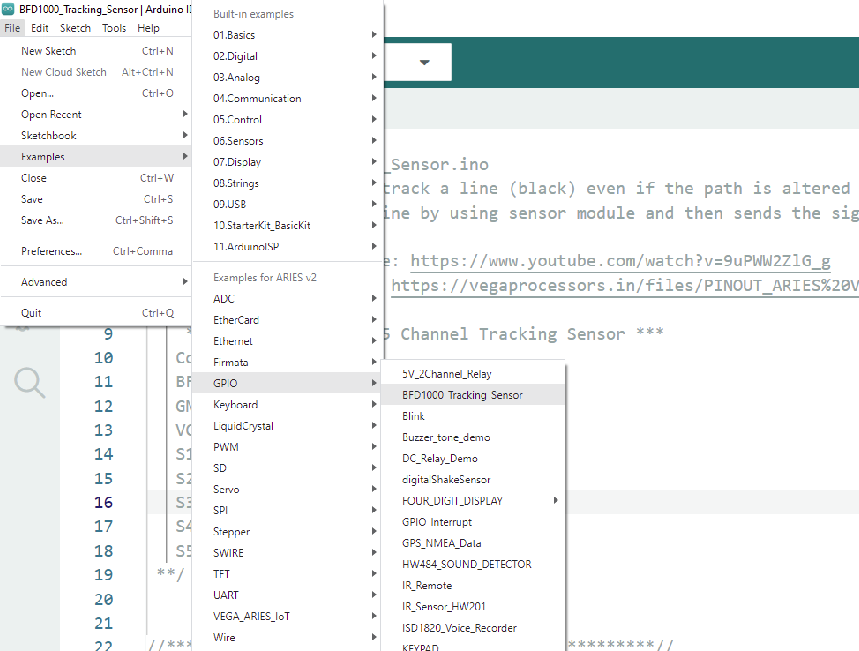
Output
Once you’ve completed the code, upload it to your ARIES v2.0 board using the Arduino IDE. Wait until the program is uploaded. After completing the uploading the program will start to execute. Show the sensor near any black surface and it will detect the black surfaces easily using the 5 digital pins available. Here i have kept the sensor on a black box to show the output as shown in the below figure.
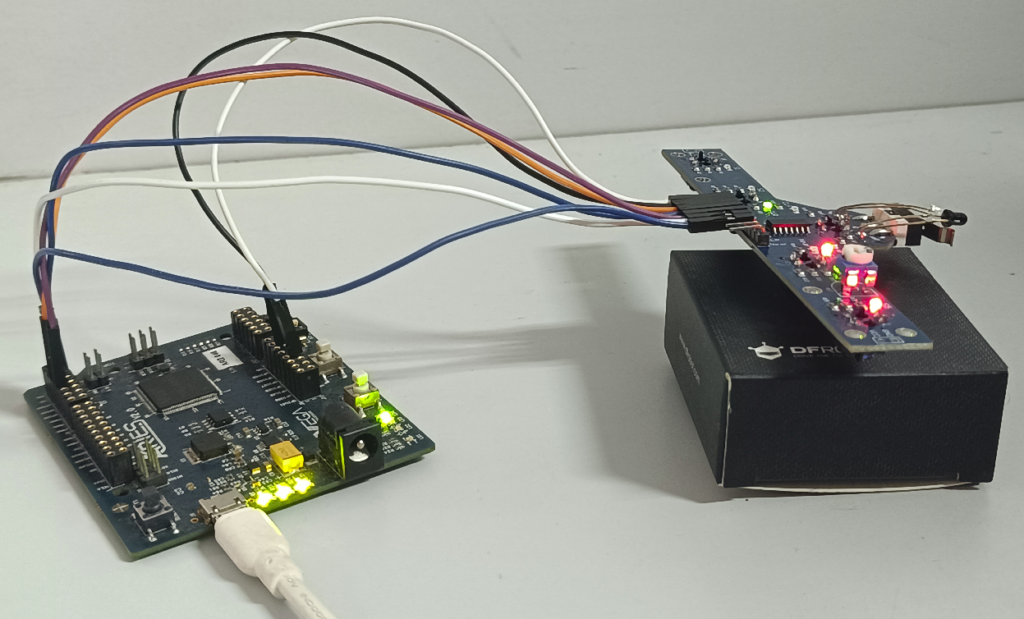
If all the 5 digital out pins (S1-S5) detects black line then you can see the output as “All sensors detected black line” in the serial monitor. Along with that corresponding internal LED associated with the digital pins in the sensor will also glow. Otherwise it will show which digital output pins detected black surface and only corresponding LED will be glowing in the sensor.
